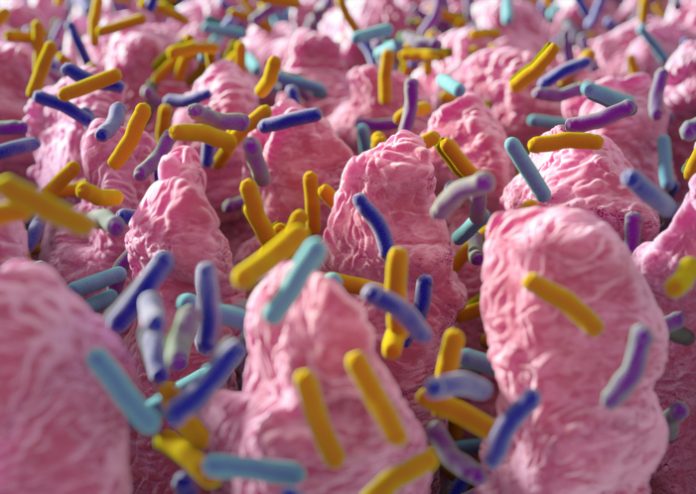
Scientists at Cedars-Sinai and the National Institute of Allergy and Infectious Diseases (NIAID) have adopted an unconventional approach to understand the function of these gut microbes—mining the host organism’s immune memory.

Techniques that identify whether and which gut microbes have crossed the gut barrier and activated immune cells outside the gastrointestinal tract, remain difficult to pin down. “It is difficult to directly detect gut microbes that translocated in humans because one has to sample internal organs, which is rarely possible, and the process of doing so introduces high chances of contamination,” said Ivan Vujkovic-Cvijin, Ph.D., an assistant professor of biomedical sciences and gastroenterology at Cedars-Sinai.
In a study published in the journal Science Translational Medicine, the researchers describe a new technique that uses serum immunoglobulin G (IgG) as a biomarker to identify inflammation-provoking bacteria that are likely to migrate from the gut to the systemic circulation.
Lead and corresponding author of the study, Vujkovic-Cvijin, said, “Microbes crossing the gut barrier usually cause inflammation and activation of the immune system, which are key features of many inflammatory diseases. By understanding which microbes are crossing the gut and causing inflammation in a disease, we then can devise methods to get rid of those microbes to stop the disease.”

Co-author of the study Suzanne Devkota, Ph.D., an associate professor in the Cedars-Sinai Division of Gastroenterology and co-author of the study said, “Bacteria can migrate out of the gut into other tissues with pleiotropic effects we have yet to fully understand. Therefore, we need new ways to assess translocation non-invasively.”
To develop the microbial culture-independent, high throughput sequencing method that they call IgG-Seq, the researchers used mice and human serum samples to quantify immune responses against specific gut bacteria. In contrast to conventional methods that use stool samples that detect gut microbial composition, using serum samples allowed the researchers to gauge the entire body’s immune responses to all gut microbes, providing a better understanding of whether and which bacteria trigger an overzealous immune activation that results in inflammation.
“We mine immune responses to gut microbes and find that this approach can identify gut bacteria that have translocated across the gut,” said Vujkovic-Cvijin. “Whenever the immune system encounters something it deems a threat, it forms an ‘immune memory’ so that the next time it sees this entity it responds more quicker and stronger. What we’ve done is made it easier to read this immune memory and look into the past to identify which gut bacteria have previously caused inflammatory encounters in an individual.”

Using IgG-seq, the investigators highlighted several commensal bacterial species that prompt elevated IgG levels in patients with inflammatory bowel disease (IBD). These included species of Collinsella, Bifidobacterium, Lachnospiraceae, and Ruminococcaceae groups. The authors show gene transcription and growth rates were increased in these bacterial species that moved out of the gut.
“Our approach represents a complementary tool to illuminate interactions between the host and its gut microbiota and may provide an additional method to identify microbes linked to inflammatory disease,” the authors noted.
“Many of the bacteria we identified haven’t been thought of as potential causative drivers of this disease [IBD],” said Vujkovic-Cvijin said. “This microbial activity is likely relevant to disease progression and may represent a viable therapeutic target.”
A limitation of the new technique is that it can only profile immune responses to bacteria and not to fungi and viruses that also constitute the gut microbiota. Vujkovic-Cvijin’s team will apply the concepts uncovered in the current study to include fungi and viruses in future studies, in addition to learning more about the mechanisms of the gut bacteria that were identified as potential targets in this study.
“Often, some of the most exciting studies are those that raise more questions than answers,” said Vujkovic-Cvijin. “We think this technique allows us microbiome scientists to ask many more questions about the relationship between host and microbiota in human disease.”













